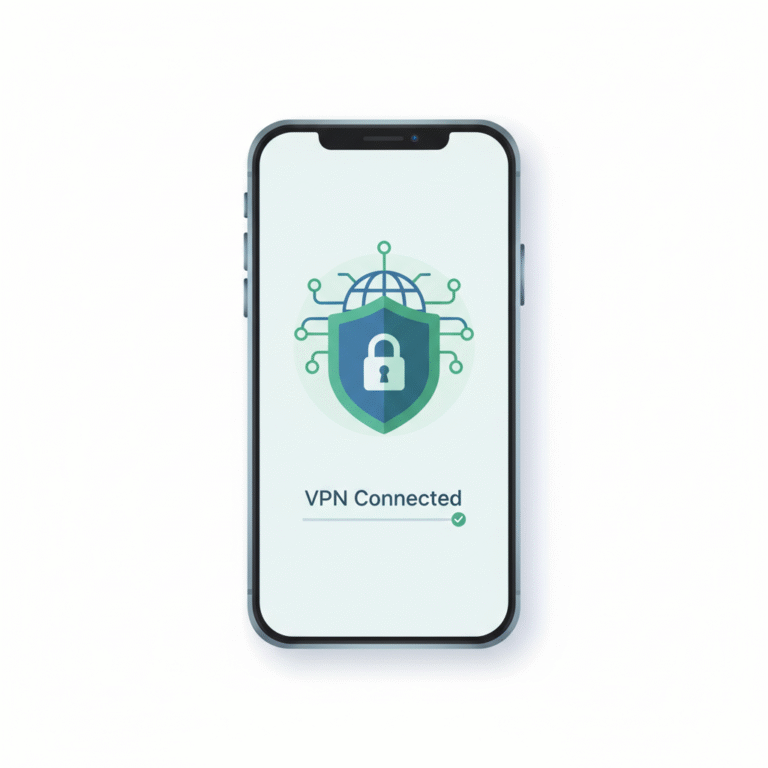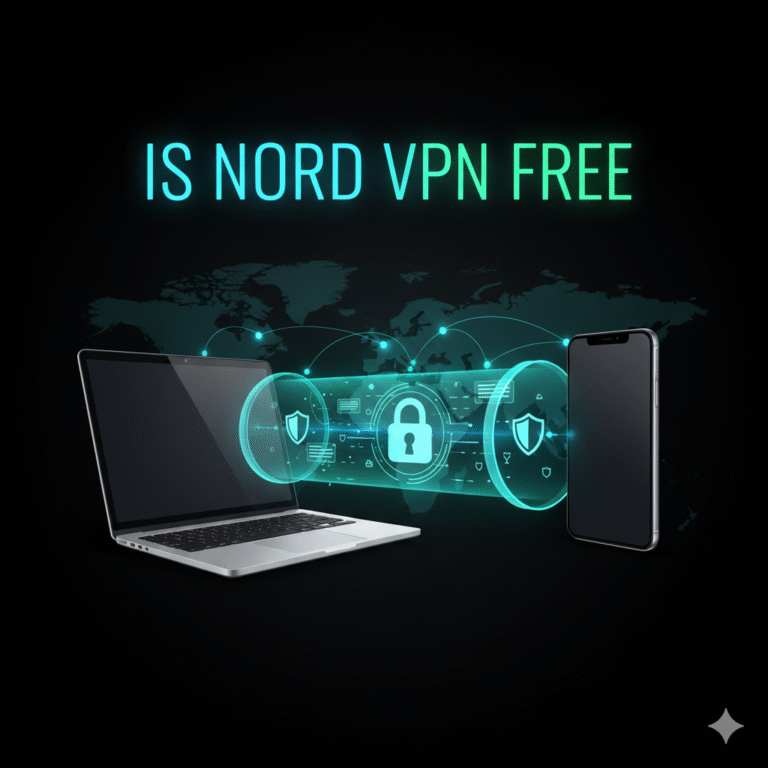Understanding what does VPN mean is fundamental for any IT professional managing secure data transmission, remote access, or privacy compliance. A VPN — short for Virtual Private Network — extends a private network across public infrastructure, encrypting connections between devices and servers. Beyond its consumer popularity for streaming or anonymity, VPN technology underpins enterprise-grade secure tunnels used by organizations worldwide.
What does VPN mean, exactly, and how does it work?
A Virtual Private Network (VPN) creates an encrypted “tunnel” between your device and a remote server, shielding data from interception on public or insecure networks. This encryption ensures that sensitive information — like credentials or proprietary files — cannot be easily accessed by third parties, including ISPs and threat actors (source: Cloudflare Learning).
At its core, VPN encapsulation involves protocols such as IPsec, L2TP, IKEv2, or WireGuard. These protocols determine how data packets are encrypted, authenticated, and transmitted. For instance, IPsec is common in enterprise deployments, while WireGuard is increasingly favored for speed and modern cryptography.
VPNs are implemented in various forms:
- Remote-access VPNs: enable employees to connect securely to corporate resources.
- Site-to-site VPNs: link multiple office networks.
- Consumer VPNs: route individual users’ traffic through encrypted gateways.
To understand VPNs at the architectural level, you can compare hardware-based solutions like VPN concentrators with software-only implementations deployed on virtual infrastructure.
What does a VPN hide (and what can ISPs or websites still see)?
A VPN conceals your device’s IP address, encrypts all outgoing and incoming data, and masks your browsing activity from local network observers. Your ISP will see that you’re connected to a VPN server but not the content or final destination of your traffic (source: Wikipedia).
However, VPNs are not total invisibility cloaks. Websites you log into can still identify you by cookies, browser fingerprinting, or account credentials. Streaming platforms, for example, detect VPN traffic through IP reputation databases. Some VPN providers counter this with rotating IP pools or obfuscation layers, minimizing detection risks.
For network administrators, distinguishing between encrypted traffic types remains a challenge. Tools like Deep Packet Inspection (DPI) can reveal VPN usage patterns but not the payload itself.
Is a VPN the same as privacy or anonymity?
No. A VPN provides privacy through encryption but not guaranteed anonymity. Privacy hides what you’re doing; anonymity hides who you are. VPN providers can technically see metadata such as connection timestamps or bandwidth usage.
Anonymous frameworks like Tor go further by routing through multiple nodes, obscuring both origin and destination. However, Tor trades speed for anonymity, while VPNs optimize for stability and throughput. For most professional or enterprise contexts, VPNs serve as privacy layers rather than full anonymity systems.
For example, users concerned about privacy leakage during data-heavy tasks like torrenting may use tools like qBittorrent VPN binding to restrict traffic strictly within a tunnel.
What are the main VPN types and use cases?
VPNs vary by architecture and operational goals:
- Remote-access VPNs support individual users accessing internal systems from external locations.
- Site-to-site VPNs connect entire LANs, often via IPsec tunnels between routers.
- Mobile VPNs maintain stable sessions even when devices switch networks (e.g., 5G to Wi-Fi).
- Consumer VPNs focus on privacy, streaming access, and bypassing regional restrictions.
An enterprise IT manager might prioritize reliability and logging compliance, while a consumer user values no-logs policies and cross-device support. A detailed comparison of point-to-point and site-to-site VPNs is available in this technical reference.
Constraints and performance:
VPN efficiency depends on encryption protocol, server proximity, ISP routing, and device capability. WireGuard, for instance, offers significantly lower overhead than IPsec due to simpler cryptographic primitives. Latency typically increases with geographic distance between client and server, while throughput depends on processor strength and encryption mode (AES-256-GCM vs. ChaCha20).
Testing VPN speed or stability should account for variables such as local congestion, Wi-Fi interference, and concurrent traffic. Benchmarking tools like iperf or integrated speed tests help identify whether bottlenecks arise from ISP throttling or protocol choice.
For those troubleshooting slow connections, reference materials like TechRadar’s VPN performance benchmarks (source: TechRadar) provide valuable empirical data.
Which VPN protocols should I use (WireGuard vs. OpenVPN vs. IKEv2)?
- WireGuard: lightweight, open-source, uses modern cryptography (Curve25519, ChaCha20). Ideal for both mobile and server environments.
- OpenVPN: highly configurable, cross-platform, widely supported but slightly slower due to CPU overhead.
- IKEv2/IPsec: robust for mobile devices with fast reconnection after network switches.
Organizations often deploy hybrid configurations: IKEv2 for enterprise access and WireGuard for personal or lightweight deployments. The choice depends on compliance needs, OS integration, and latency tolerance. For deeper standards context, refer to RFC 7296 describing IKEv2 key exchange mechanisms.
Is using a VPN legal, and are there situations where you shouldn’t use one?
In most jurisdictions, using a VPN is entirely legal. VPNs are legitimate tools for data protection, remote work, and privacy compliance. However, misuse — such as masking illegal activity or violating platform terms — can result in penalties or service bans.
Countries like China, Russia, and Iran restrict unauthorized VPN usage, requiring government-approved providers for lawful operation (source: Kaspersky Blog). IT departments must therefore consider compliance with regional data sovereignty and encryption laws before deploying VPNs in restricted areas.
Even in open markets, using a VPN to bypass licensing agreements (for instance, accessing geo-restricted streaming content) can breach service terms. Therefore, understanding both technical and legal boundaries is essential for responsible VPN deployment.
To explore regulatory implications further, see the guide on VPN legality in China.
How do I choose a trustworthy VPN provider?
Evaluating a VPN requires more than checking speed claims. Professionals should assess five key factors:
- Jurisdiction: Choose providers based in countries with favorable privacy laws (outside the 5/9/14 Eyes alliances).
- No-logs policy: Confirm via independent third-party audits or continuous verification models.
- Encryption strength: AES-256 or ChaCha20 for data security; RSA-2048+ for key exchange.
- Infrastructure: Prefer RAM-only or diskless servers to reduce data persistence risk.
- Transparency: Review open-source codebases or transparency reports.
A practical approach is to compare providers like NordVPN and ExpressVPN, both of which publish annual audits and run extensive RAM-only networks.
From an enterprise standpoint, evaluating SLAs, uptime guarantees, and API integration for access management is equally vital. Trust isn’t only about encryption — it’s about the provider’s operational integrity.
How does VPN differ from proxies or Tor?
While all three conceal some network information, their architectures and guarantees differ:
- VPN: Encrypts all traffic between client and VPN server; protects against ISP and local surveillance.
- Proxy: Only masks traffic from specific applications; offers no encryption.
- Tor: Routes through multiple volunteer nodes for anonymity but sacrifices performance.
In cybersecurity operations, VPNs are often integrated with secure gateways, while proxies are used for load balancing or caching. Tor remains valuable for threat intelligence research or anonymized reporting, but not for high-throughput workloads.
Users sometimes combine VPN and Tor (“Onion over VPN”) for layered privacy, though this adds latency. Each technology has a distinct purpose, and understanding them prevents misconfigurations in secure environments.
For professionals comparing VPN and proxy performance, see this technical overview on Ascaler VPN proxy architecture.
When does using a VPN not protect you?
Even the best VPN cannot protect against all threat vectors. Common misconceptions include assuming VPNs stop:
- Phishing attacks (they don’t block malicious sites by default).
- Account-based tracking (cookies still identify logged-in sessions).
- Compromised devices (malware can bypass encrypted tunnels).
Security teams should layer VPNs with endpoint detection, MFA, and DNS filtering for holistic protection. Modern solutions like Encrypted DNS or DNS-over-HTTPS (source: RFC 8484) complement VPNs by encrypting DNS queries, closing another common leakage path.
For users testing VPN effectiveness, verifying IP leaks and DNS leaks using diagnostic tools remains a best practice. This distinction ensures teams understand where VPN coverage ends and network security begins.
Constraints and performance:
Performance benchmarking depends on device class (laptop, mobile, or router), ISP stability, and the chosen encryption suite.
- CPU load: Heavier ciphers like AES-256 increase power draw on mobile devices.
- Server distance: Longer paths raise latency and packet loss.
- ISP throttling: Some ISPs reduce speed for encrypted traffic patterns; obfuscation mitigates this.
Controlled tests should involve at least three protocols (OpenVPN, IKEv2, WireGuard) across geographically distributed servers. On average, WireGuard yields 20–30% faster throughput with lower CPU cost compared to OpenVPN, though enterprise deployments still favor IPsec for standardization and compliance.
For further tuning strategies, refer to TechRadar’s performance comparison on top VPNs in 2025.
Why understanding VPN fundamentals matters
Knowing what does VPN mean goes beyond textbook definitions — it anchors secure networking strategies in practice. Whether you’re protecting remote endpoints, ensuring compliance, or enabling encrypted B2B communications, VPN technology remains a foundational security layer.
When combined with sound endpoint policy, traffic monitoring, and encryption hygiene, VPNs form the backbone of a defense-in-depth architecture. However, as attackers evolve, relying solely on VPNs without multi-layer controls can introduce blind spots.
To advance your VPN deployment strategy, continue with resources like What does a VPN do — Benefits & How It Works, which expands on performance tuning and modern encryption design.
Conclusion
In summary, what does VPN mean is best understood as both a concept and a tool — a secure tunnel built to protect data integrity and privacy across untrusted networks. From consumer anonymity to enterprise-grade access, VPNs remain essential in the digital trust framework of modern connectivity.



